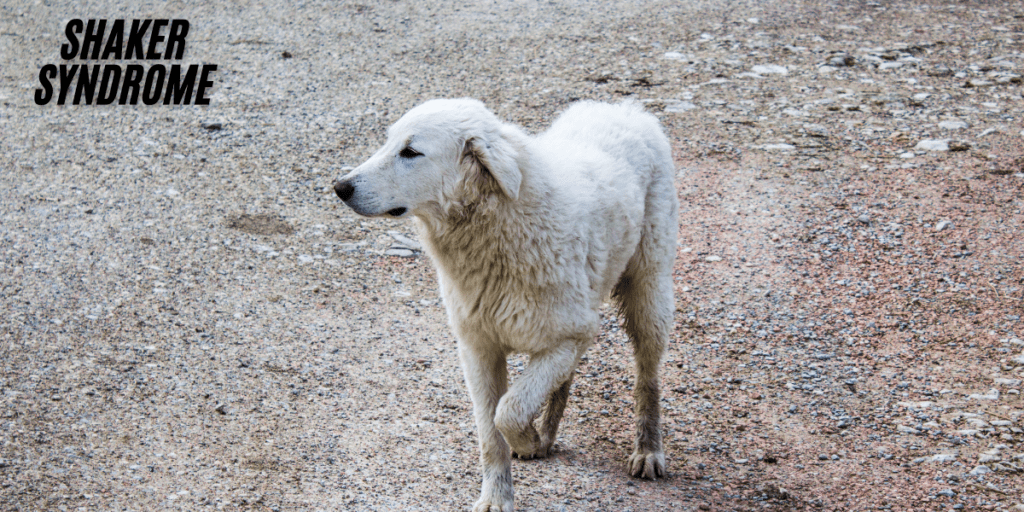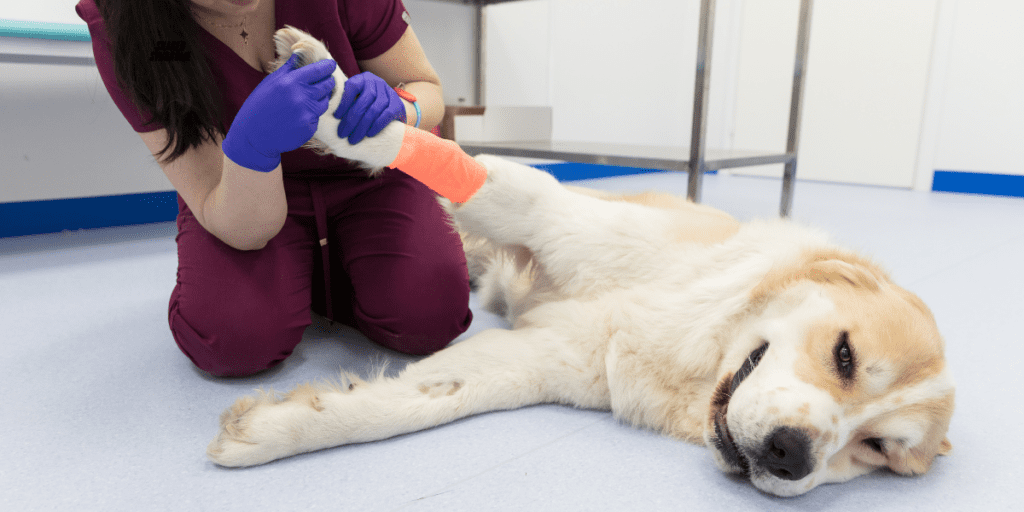Why Do Your Dog’s Leg Shaking? Hidden Causes and Solutions
Table of Contents
ToggleAs dog owners, we’ve all likely noticed our furry companions experiencing leg shaking from time to time. Sometimes, it’s a small, frequent twitch or tremor that seems almost random and harmless, while other times it may be more pronounced, affecting a limb or both rear legs. While occasional shaking may not be a cause for concern, frequent tremors can signal a deeper issue that needs to be addressed. This involuntary movement may be linked to a variety of conditions, ranging from pain or muscle fatigue to more serious medical conditions that can impact the overall health and well-being of your pet.
When a dog’s legs begin to shake, it’s important to consider the possible causes. Leg tremors might stem from something as simple as muscle trembling after too much activity or from underlying health conditions such as joint pain or even more complex neurological disorders. If the shaking is persistent and affects the dog’s ability to stand up or walk, it’s essential to explore these causes. Veterinarians can help by providing a detailed guide to understand the treatment options available, including assistive devices that can aid in mobility and therapy for muscle strength and coordination.
As pet owners, it’s natural to feel confused and unsure when your dog experiences trembling or shaking back legs. Experts suggest that frequent shaking, especially if it’s affecting your dog’s ability to function normally, could be a sign of something more significant. Identifying the root cause of twitching and muscle issues can be the first step in ensuring your dog’s comfort and preventing further damage. Whether the shaking is a result of minor injuries, muscle weakness, or more serious health conditions, acting early can make a world of difference in your dog’s quality of life.
Understanding Dog’s Leg Shaking: Causes and Concerns
Common Causes of Shaking:
- Excitement or Anxiety:
- Dogs may shake when they’re excited or feeling anxious.
- Cold or Wet Conditions:
- Shaking can occur when dogs are exposed to cold temperatures or after a bath.
- Smaller breeds, with a higher surface-area-to-volume ratio, are more sensitive to cold weather.
- Shaking helps maintain their body temperature, but prolonged exposure can lead to muscle fatigue or dehydration.
Shaking Due to Physical Issues:
Joint and Muscle Problems:
- Older dogs may experience hind leg shaking due to joint damage, instability, or muscle weakness.
- Conditions like arthritis or osteoarthritis can lead to degeneration in the joints, causing pain and muscle spasms.
- This can make standing or walking difficult and uncomfortable.
Metabolic Imbalances and Shaking:
- Low Blood Sugar:
- Trembling or shaking back legs can result from low blood sugar.
- Electrolyte Imbalances:
- Imbalances in electrolytes can also cause shaking.
- Proper rest and nutritional support are essential for addressing these issues and relieving the symptoms.
Neurological Disorders:
Degenerative Myelopathy and Generalized Tremor Syndrome:
- Neurological conditions like degenerative myelopathy or generalized tremor syndrome can cause shaking and muscle spasms.
- These conditions are more common in breeds like Collies, Bernese Mountain Dogs, and Pugs.
- Symptoms often start in the rear legs and may progress over time.
When to Seek Veterinary Care:
- Persistent or worsening symptoms require diagnostic tests to identify the underlying cause.
- Consulting a veterinarian is crucial for proper diagnosis and treatment, especially in cases of neurological issues or prolonged discomfort.

Dog Tremors Uncovered: Causes, Symptoms, and Life-Changing Care
1. Understanding Shaker Syndrome in Dogs: Causes, Symptoms, and Treatment
What is Shaker Syndrome?
- Shaker Syndrome, also known as generalized tremor syndrome (GTS), is a condition that primarily affects small breeds such as:
- West Highland White Terriers
- Poodles
- Chihuahuas
- Yorkshire Terriers
- The condition typically begins in young dogs aged 9 months to 2 years.
- Tremors may range from mild shaking of one body part to severe trembling affecting the entire body.
- Symptoms often worsen with activity or excitement but improve after rest.
Causes of Shaker Syndrome:
- The exact cause is not entirely understood, but it is believed to be autoimmune.
- Congenital tremors may also contribute, involving the spinal cord or brain.
Treatment and Management:
- Treatment typically involves high doses of prednisone, a corticosteroid that can lead to rapid improvement.
- Many dogs can eventually be weaned off the medication over time.
- Veterinary care is crucial for managing symptoms and monitoring the response to treatment.
Key Considerations:
- Dogs under 35 pounds, particularly toy breeds and those with lighter coat colors, are more susceptible to Shaker Syndrome.
- Severe cases may impact a dog’s ability to maintain steadiness, but with the right care, most dogs recover fully.
- Monitoring for trembling episodes or related symptoms ensures early detection and treatment.
Prognosis:
- With proper care and treatment, the prognosis for Shaker Syndrome is generally good, allowing dogs to live healthy, active lives.
2. Shaking Puppy Syndrome: Causes, Symptoms, and Care
Overview of Shaking Puppy Syndrome:
- Shaking Puppy Syndrome primarily affects certain dog breeds with a genetic predisposition, such as:
- Weimaraners
- Samoyeds
- Rat Terriers
- Bernese Mountain Dogs
- This condition is typically observed in very young puppies, often presenting as tremors in the head and body.
- Symptoms can range from mild to severe and tend to worsen with excitement or activity, but they improve with rest.
Symptoms and Impact:
- Common symptoms include:
- Head bobbing
- Unsteady movement, particularly in the rear legs
- Difficulty walking or standing properly
- Tremors can interfere with coordination, affecting the puppy’s mobility and balance.
Causes of Shaking Puppy Syndrome:
- Often linked to spinal cord issues or neurological problems such as hypomyelination, which affects nerve development.
- Symptoms usually appear as early as two weeks of age and are tied to developmental conditions.
Prognosis by Breed:
- For breeds like Weimaraners, the condition may improve over time, with tremors becoming less noticeable.
- In breeds like Bernese Mountain Dogs, tremors may persist longer but generally don’t interfere significantly with normal movement as they mature.
Age-Related Tremors in Senior Dogs:
- Similar shaking can occur in senior dogs due to:
- Osteoarthritis
- Nerve or joint deterioration, leading to stiffness and walking difficulties.
Importance of Veterinary Care:
- If your puppy or dog exhibits signs of shaking or abnormal movement, it’s crucial to consult a veterinarian.
- A genetic test may be recommended to determine whether the condition is hereditary or caused by other factors.
- Early diagnosis and understanding of the underlying causes can ensure proper care and treatment to support the dog’s quality of life.

3. Head Tremors in Dogs: Causes and Treatment
Overview of Head Tremors:
- Head tremors are a common concern, particularly in breeds like English Bulldogs.
- The tremors typically involve rhythmic head movements or constant shaking, which can vary in severity.
- The jerking motion may worsen with restlessness or stress.
Possible Causes of Head Tremors:
- Genetic Aberration: In certain breeds, like English Bulldogs, the shaking could be due to a genetic factor.
- Epilepsy: For some dogs, epileptic seizures may cause head shaking. Other symptoms of epilepsy may include:
- Seizures
- Rhythmic blinking
- Loss of consciousness
- Neurological Disorders: Head shaking can sometimes be linked to a more serious neurological condition, though this is not always the case.
Impact and Prognosis:
- In many cases, head shaking does not have a significant impact on the dog’s quality of life.
- The tremors may resolve over time, especially with proper care and attention.
- For dogs with epilepsy, the tremors may persist but can be managed with long-term medication and careful monitoring.
Diagnosis and Treatment:
- Understanding the severity and pattern of the tremors is essential for proper treatment.
- If your dog exhibits unusual head movements, it’s important to seek a veterinary diagnosis to determine whether the shaking is linked to a neurological disorder or another condition.
- Early diagnosis ensures the best approach to managing your dog’s health and well-being.
4. Leg Shaking in Dogs: Emotional and Behavioral Causes
Emotional and Behavioral Causes of Leg Shaking:
- Leg shaking in dogs is often linked to emotional distress or behavioral factors.
- For example, excited dogs may experience leg tremors when anticipating activities like:
- Going for a walk
- Playing fetch
- The anticipation of these activities can trigger agitation or even anxiety in some dogs.
Anxiety and Stress-Related Leg Shaking:
- Fear and stress can also cause leg tremors, accompanied by behaviors such as:
- Trembling
- Pacing
- Hiding or other signs of distress
- These emotional expressions may manifest in joyful movements or more extreme responses like leg shaking.
Addressing Anxiety and Behavioral Issues:
- If a dog shows persistent signs of distress or anxiety, it’s crucial to address these behaviors early.
- Consulting a veterinarian or a behaviorist can help determine if the cause is emotional or behavioral.
- This ensures the dog receives the appropriate care and attention to manage anxiety or stress effectively.
Leg Shaking in Dogs: Treatment Options
Supportive Care and Management:
- Offering your dog a secure space helps minimize stress and manage discomfort.
- Regular exercise and mental stimulation can build leg strength and redirect energy.
- Light exercises, stimulating toys, or puzzles can help reduce excessive shaking and improve overall well-being.
- Ergonomic changes in the home can reduce strain on the rear legs, potentially minimizing the shaking.
Diet and Nutrition:
- Special diets and proper nutrition are vital in addressing obesity and metabolic imbalances that can contribute to leg shaking.
- Vitamins B, C, and E, along with N-acetylcysteine, can help maintain muscle health and slow muscle loss or atrophy.
Medical Treatments:
- In more severe cases, treatments such as fusion surgery or joint replacement may be recommended to improve joint stability and leg function.
- Prednisone and muscle therapy are also options that may provide relief, particularly for dogs with chronic pain or degenerative disorders.
Veterinary Consultation:
- Always consult a veterinarian for a comprehensive treatment approach to determine the best course of action for your dog’s health.
Conclusion:
If you notice leg shaking in your dog, it’s important to assess the frequency and intensity of the behavior and consider any associated symptoms. While occasional shaking may not be a cause for concern, if the behavior changes, it could be a sign of underlying health issues that require attention. As responsible pet owners, you should take prompt action and seek a professional evaluation from a veterinarian to determine the cause. Taking appropriate measures can make a significant difference in your dog’s well-being and overall happiness. Consultation can help ensure that your furry friend is healthy and happy, addressing any concerns early on.



